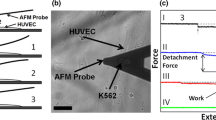Abstract.
Objective and Design: In order to understand the underlying mechanism of histamine stimulated inflammatory responses, histamine receptor subtypes and signal transduction pathways by which histamine mediates the stimulation of neutrophil adhesion to endothelial cells has been studied in vitro.¶Material: Human neutrophils and human umbilical vein endothelial cells.¶Treatment: Confluent human endothelial cell layer were incubated with histamine (1 mM), H1, H2 or H3 receptor agonists: fluorophenylhistamine (10 μM), amthamine (10 μm), methylhistamine (10 μM), respectively. Ten minutes prior to histamine (1 mM) stimulation H1, H2 or H3 receptor antagonists (dimethindene, 100 μM; famotidine, 100 μM, thioperamid 100 μM, respectively) were added. Histamine stimulated signal transduction pathways were inhibited by adding phospholipase C inhibitor 2-nitro-4-carboxyphenyl N,N-diphenylcarbamat (200 μM), adenylate cyclase inhibitor 9-(2 tetrahydrofuryl)adenine (80 μM), nitric oxide synthase isozymes inhibitor S-ethylisothiourea (1 μM) or guanylate cyclase inhibitor (LY 83583; 10 μM). Neutrophil adhesion was monitored at 30, 60, 90, 120, 150, 180 and 210 min.¶Methods: Neutrophil adhesion to endothelial cells was quantified by analysing alkaline phosphatase activity.¶Results: Histamine stimulation of endothelial cells resulted in a biphasic time and concentration dependent pattern of neutrophil adhesion. This pattern of neutrophil adhesion was mimicked by stimulation of endothelial cells with H1 or H2 agonists. Stimulation of endothelial cells with an H3 agonist had no effect on neutrophil binding. Inhibition of phospholipase C (PLC), nitric oxide synthase isozymes (NOS) or guanylate cyclase (GC) resulted in a significant decrease of neutrophil binding to histamine or agonist stimulated endothelial cells. An increase of neutrophil binding to unstimulated or to agonist stimulated endothelial cells was observed during inhibition of adenylate cyclase.¶Conclusions: Our results suggest that histamine stimulated neutrophil adhesion is due to H1 and H2 receptor mediated activation of PLC, NOS and GC. Increase of cAMP concentration seems to mediate an inhibitory effect on PMN adhesion to endothelial cells
Similar content being viewed by others
Author information
Authors and Affiliations
Additional information
Received 6 August 1997; returned for revision 15 January 1998; accepted by E. Neugebauer 24 March 1998
Rights and permissions
About this article
Cite this article
Schaefer, U., Schneider, A., Rixen, D. et al. Neutrophil adhesion to histamine stimulated cultured endothelial cells is primarily mediated via activation of phospholipase C and nitric oxide synthase isozymes. Inflamm. res. 47, 256–264 (1998). https://doi.org/10.1007/s000110050327
Published:
Issue Date:
DOI: https://doi.org/10.1007/s000110050327




